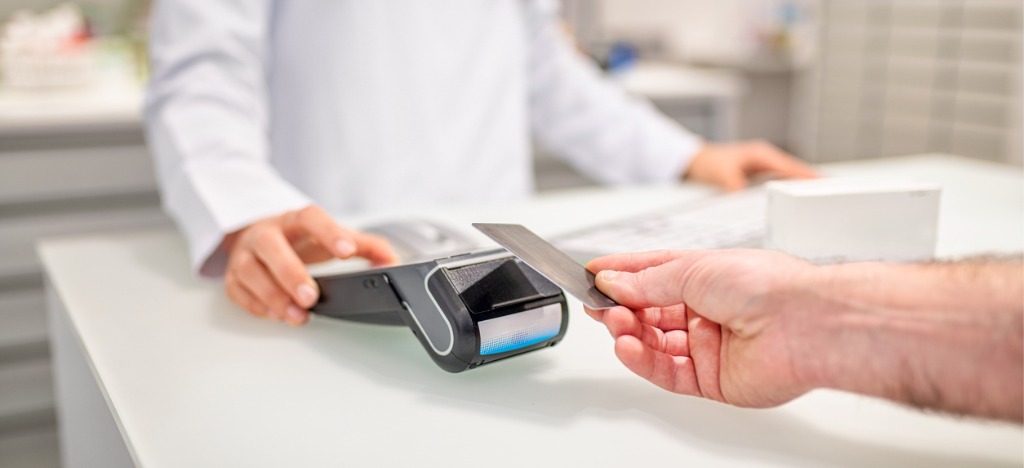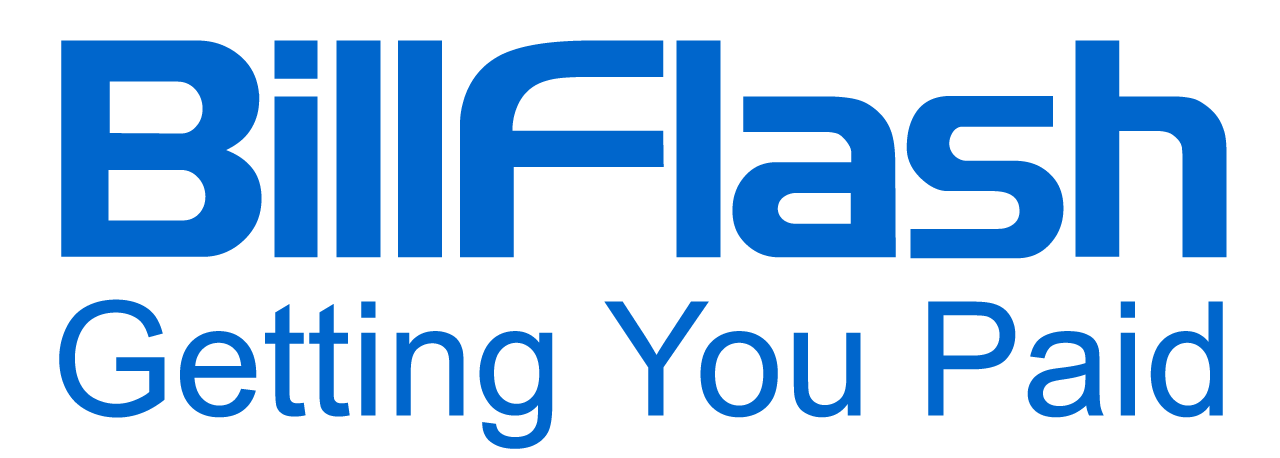Learn how to enhance your practice's patient payment collections through transparent and convenient billing options from BillFlash!
Patients now look for more than high-quality care—they also want financial clarity and flexibility in billing. They expect providers to offer billing options and processes that match their digital experiences in other aspects of life. So, medical and dental practices still using paper-based systems and only offering limited payment options face significant challenges in meeting these expectations.
With patient responsibility increasing, providers must recognize that outdated billing options lead to delayed collections, frustrated patients, and eventually, lost revenue. The good news? Modernizing payment systems can turn this pain point into an opportunity to improve patient satisfaction and overall financial health. This change goes beyond technology—it creates a patient-centered financial experience that builds trust and loyalty.
The Growing Demand for Flexible Billing Options
Patients today expect an easy, familiar, and painless experience when paying their bills. 78% of patients consider the billing process somewhat or very important when selecting a provider. Billing is no longer just a back-office concern; it significantly influences patient loyalty and their decision to return.
Trends Shaping the Demand for Convenient Billing Options
Several factors drive this shift in expectations:
- High-Deductible Health Plans and Increased Financial Responsibility. Patients are now more accountable for their healthcare expenses.
- Better Digital Payment Experiences. After experiencing fast, user-friendly retail and banking transactions, patients expect similar convenience in healthcare billing options.
Healthcare digital payments reached $11.75 billion in 2022 and are projected to grow at a 21.5% compound annual growth rate through 2030. Changing patient preferences and behaviors influences this growth. Traditional payment methods continue to decline in popularity. In 2022, only 4.2% of consumers preferred cash, while 8.3% preferred checks for healthcare payments. Meanwhile, credit cards (37.6%) and debit cards (32.1%) were at the top of patient preferences, with mobile wallets gaining momentum.

The Current Gap in Patient Satisfaction
- Loyalty vs. Satisfaction. While 90% of patients tie their loyalty to a positive financial experience, 41% feel dissatisfied with current medical billing processes.
- Pain Points. Difficult payment portals and unclear, inconsistent cost estimates—compared to the simplicity of digital transactions in other industries—lead to greater patient frustration and an even greater lack of trust.
Addressing this difference isn't just about patient retention; it's also a key operational priority. Better billing options, such as mobile-friendly payment options, transparent cost estimates, and flexible payment plans, can relieve staff responsibilities, allowing them to concentrate on delivering care. Research shows that 80% of patients want the ability to pay medical bills in installments or through payment plans. By addressing these issues, medical and dental providers can transform billing from a frustration into a loyalty booster.
Patients expect transparency and simplicity, whether using a payment portal or receiving a direct payment link via text or email. More patients also want to avoid being surprised when they receive their bills. Patients prefer knowing costs upfront, such as through pre-visit billing. This helps them budget and reduces the likelihood of delayed or missed payments.
As minor inconveniences affect patient satisfaction, providing flexible billing options is essential. It helps speed up cash flow and build trust, contributing to long-term patient retention.
The Top Challenges Patients Face With Traditional Billing
Financial transparency has become equally important in patient expectations, especially considering that 75% of patients believe medical bills are too complicated. Imagine after a routine appointment at a medical or dental office, a patient leaves feeling confident in their care, only to be surprised weeks later with a confusing, unexpected bill that contradicts the clarity of the service they received just a few weeks ago.
Instead of reinforcing patient trust, this lack of proper communication leads to uncertainty and frustration. 56% of patients reported feeling stressed when trying to understand what they owed, and 28% of patients delayed payments because they were unsure about what their insurance covered. When billing statements are unclear, patients often associate their frustration with the provider rather than the insurer.
The same survey found that more than 95% of patients believe proper coordination between their medical provider and the insurer is key to creating a positive billing experience. This influences their decision to return to a provider and recommend it to others. However, over 40% left negative reviews due to billing frustrations, and 38% switched providers because of poor billing experiences.
Limited Payment Methods
Limited payment methods offered by providers present another challenge. While some patients appreciate receiving paper bills, others prefer digital options like emails or texts with direct links to online payment portals. For example, one study found that 56% of patients favor receiving email or text notifications for billing and payment reminders. When medical and dental practices fail to offer billing options that meet these preferences, they risk lower payment rates and alienate patients who expect a choice in how they pay.
A lack of automated reminders also contributes to patient stress. Medical and dental bills can easily slip from a patient's mind without timely reminders. Inadequate payment reminder systems can greatly complicate collections. Without strategic, automated reminders, people easily forget bills amid their daily responsibilities. Each missed reminder represents a missed opportunity to collect payment while the charge remains fresh in the patient's mind.

The Billing Options Patients Want
The all-or-nothing approach to payments ignores the financial realities faced by many patients. With smartphone adoption expected to reach 92% by 2030, more patients will expect to manage healthcare expenses through their devices. However, when practices don’t offer the billing options patients prefer, they make it difficult for willing patients to pay their bills.
The billing options more patients are looking for include:
Pre-Visit Billing
Patients value knowing the cost of care ahead of time. Providing prices before an appointment allows patients to understand what they will owe and explore financing options. This approach sets clear expectations and prevents sticker shock after patients receive care.
Mailed Bills With QR Codes
Mailed bills still serve an important purpose when paired with QR codes. These QR codes transform traditional patient statements from passive reminders into payment opportunities. Patients can scan the QR code with their smartphone to access a secure payment portal, bridging the gap between paper and digital experiences. This convenience factor in billing options helps increase response rates while accommodating patients who prefer receiving physical statements.
Text and Email Billing Reminders (eBills)
Text and email billing reminders represent the type of digital evolution patients expect. These electronic bills and notifications with integrated payment portal links remove barriers between receiving and paying the bill. This approach accelerates the revenue cycle for medical and dental practices, with payments arriving within hours instead of weeks.
Automated PayReminders
Automated payment reminders have become important in our information-saturated world. Strategic, carefully timed billing reminders sent via text and email significantly improve collection rates without increasing staff workload. Systems that automatically stop billing reminders after payment ensure patients avoid unnecessary hassles and prevent staff from wasting time on resolved patient accounts.

In-Office and Card Payments
In-office payment capabilities remain essential to medical and dental billing options. Practices must accommodate different payment methods, including traditional options alongside newer technologies like tap-to-pay, Apple Pay, and Google Pay. The rise of mobile wallets in healthcare is significant, with 15.5% of all mobile wallet payments going toward healthcare services.
Online and Mobile Payments
Patients expect secure, user-friendly portals that allow them to view their payment history, outstanding balances, and payment options anytime, anywhere. These digital platforms should work on all devices, ensuring consistent experience whether patients use smartphones, computers, or other mobile devices.
Flexible Financing (FlexPay)
Many patients appreciate billing options that spread the cost over time for more expensive procedures. FlexPay allows patients to finance their treatment, reducing the burden of high upfront costs while the provider receives payment immediately. This option is especially valuable for those who might delay necessary care due to cost concerns.
The common thread connecting these payment options is choice. Different patients have different preferences and financial situations. By offering payment alternatives, practices demonstrate their commitment to patient-centered care beyond medical and dental services.
How Modern Billing Options Improve Cash Flow and Patient Satisfaction
Implementing flexible, patient-centric billing options creates a powerful ripple effect throughout a medical or dental practice. However, making billing more transparent and manageable further improves patient satisfaction. When patients know what they owe and can pay conveniently, they develop more trust in the practice. The connection between financial experience and overall satisfaction can never be overstated.
The impact on cash flow is also significant. Digital payment solutions accelerate the revenue cycle by reducing the time between service and payment. While traditional billing cycles can stretch into several months, digital solutions like text and email billing generate payments within hours or days. This acceleration directly improves cash flow, providing practices with greater financial stability and resources for growth and improvement.

Reduced Administrative Workload and Collection Challenges
Modern billing options also offer the key benefit of reducing administrative workload. Automating billing tasks, such as sending reminders and processing online payments, frees up staff time. This allows staff to focus on more meaningful tasks, such as patient care and administrative improvements. Reducing administrative workload helps practices experience fewer billing disputes and better staff morale.
Collection challenges also diminish substantially with flexible payment options. Offering payment plans and financing options helps patients overcome financial barriers rather than categorizing them as “won’t pay” accounts. This distinction is crucial—many patients want to fulfill their financial obligations but need options that work within their budget limitations, especially given that 60% cannot afford unexpected medical expenses in one lump sum.
Modern billing platforms also generate useful data insights that help practices make better management decisions. These systems can track payment patterns, identify revenue cycle bottlenecks, and evaluate the effectiveness of different collection strategies. With this information, practices can refine financial strategies to optimize results while fulfilling patient needs.
Discover BillFlash – The All-in-One Solution for Medical and Dental Billing
Transforming your medical or dental practice's billing experience doesn't require tearing down existing workflows or implementing multiple disconnected systems. BillFlash offers billing options that address every aspect of modern healthcare billing while integrating smoothly with your current practice management software. With BillFlash, medical and dental practices can benefit from:
Secure Online, Mobile, and In-Office Payments
For practices prioritizing digital transformation, BillFlash uses a user-friendly payment portal, PayWoot.com, that allows patients to settle balances via credit or debit cards, or automated bank transfers. This portal meets security standards and provides 24/7 access, benefiting patients who prefer to pay medical bills outside business hours. In-office payment options remain equally strong, supporting cash, traditional card readers, over-the-phone payments, mobile wallets (Apple Pay, Google Pay ), and check processing to accommodate all patient preferences.
Mailed Bills With QR Codes
BillFlash revolutionizes traditional billing options through QR code-enabled mailed statements, merging the familiarity of physical bills with modern payment technology. Patients scanning these QR codes gain instant access to the payment portal, reducing billing cycle times.
Text and Email Reminders
Automated communication tools streamline collections through targeted text or email reminders. BillFlash's eBills via text and email encourage faster payments by notifying patients promptly upon approval. Practices can set specific rules to send up to three text and email reminders monthly until the balance is paid with BillFlash’s PayReminders. After receiving payment, the system automatically removes the patient from the reminder workflow.

Flexible Financing Options With FlexPay
For expensive procedures or balances that are just too large to pay at once, BillFlash offers FlexPay. This lets patients spread payments over time, easing upfront costs and preventing delays in receiving care. Patients can apply in less than one minute, without hard credit checks, ensuring they can maintain their credit scores while exploring financing options. With a 90% approval rate, FlexPay provides interest-free financing options, making healthcare services more affordable. For providers, FlexPay initiates payment the next business day without recourse for patient non-payment, ensuring immediate and secure revenue.
Full Integration With Over 100 Billing Systems
BillFlash integrates seamlessly with a wide range of billing systems. This compatibility means medical and dental practices can adopt BillFlash's solutions without revamping their billing process.
Over 60,000 providers nationwide trust BillFlash to simplify billing, reduce administrative burdens, and accelerate cash flow. Many have reported up to a 60% increase in patient payments within the first 30 days of implementation. With fully integrated payment tools, billing, reminders, financing, and collections, BillFlash delivers a seamless experience for practices and patients.
Ready to improve your billing options? Schedule a demo today to learn more about BillFlash’s payment, billing, and collections solutions.

